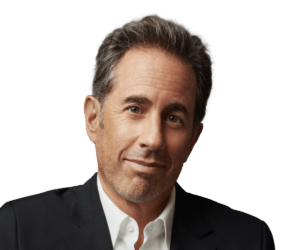
Speaking Confidently Requires Subject Command, Awareness and Hard Work
Speaking confidently requires an awareness of how you speak and a willingness to improve how you sound. Confident speech is no accident.
Speech training helps iron out problems like distracting hand motions, awkward body language and verbal tics. Training provides solid advice such as speaking more slowly, pausing for emphasis, avoiding asides and not talking too much.
Building confidence in speaking demands additional discipline such as solid command of a subject, proper vocal tone and maintaining eye contact. The value of speaking confidently is to give your audience or your boss the confidence to trust what you’re saying.
In many ways, confident speech is like an actor delivering his or her lines clearly, on cue and with appropriate expression. Good actors look the part and voice the part.

Confident speech has practical value in making a presentation, giving an interview or speaking to a reporter. A speaker must evince confidence by their posture, their appearance, their gestures and their words. It’s a total body experience.
A lack of awareness can lead to a false sense of self-confidence. That unawareness can be cured by listening to a good quality tape of yourself talking – and by asking someone who is a confident speaker to listen to the same tape and review how you sound.
Many people are surprised at what they hear coming from their own mouth and by an honest critique from a competent colleague.
The greater awakening is perceiving how key audiences react to how you speak. That’s harder to test and may be hard to digest. But it’s useful and necessary feedback to achieve greater mastery of confident speech.
“The people who seem the least nervous
ave worked the hardest to prepare themselves.”
 How Bad Can It Be?
How Bad Can It Be?
Frankly, pretty bad. Communication coach John Millen started a recent blog with a Jerry Seinfeld quip: “According to most studies, people’s number one fear is public speaking. Number two is death. Death is number two. Does that sound right? This means if you go to a funeral, you’re better off in the casket than doing the eulogy.”
“We all know what it’s like to be anxious before we have to give a presentation: elevated heart rate, shortness of breath, racing thoughts and other symptoms of anxiety,” Millen writes. “And yet, we’ve all seen people who rise to the occasion and don’t seem nervous at all. Their thoughts and words seems to flow effortlessly. They exude confidence.”
 Millen also observes, “The people who seem the least nervous have worked the hardest to prepare themselves.” In other words, becoming a confident speaker is something you have to want to do. It doesn’t just happen miraculously.
Millen also observes, “The people who seem the least nervous have worked the hardest to prepare themselves.” In other words, becoming a confident speaker is something you have to want to do. It doesn’t just happen miraculously.
“I have a client in New York, the president of a Fortune 100 company division, who is renowned for being a natural’ in his charismatic and seemingly spontaneous delivery,” Millen says, “but he shares with anyone who asks that it takes hard work to seem spontaneous: He carefully crafts, practices and delivers his messages.”
Traits of a Confident Speaker
Confident speakers have different roles. They deliver speeches, give interviews, make presentations and participate in conversations.
Those differing roles have different demands. A speech needs to meet an audience’s expectations. An interview needs to deliver a key message. A presentation must be informative and persuasive. A conversation should feel natural and unforced.
There aren’t really rules of thumb on how to prepare, except that preparation is a must. Here are some general principles of confident speech:
 Be in command of your subject. Know what you are talking about and have a clear point to make. You don’t need to know everything about a topic or be expected to answer every question. You do need to be prepared to explain and defend the point you are making.
Be in command of your subject. Know what you are talking about and have a clear point to make. You don’t need to know everything about a topic or be expected to answer every question. You do need to be prepared to explain and defend the point you are making.
Be aware of your circumstances. Speaking to an audience is different than answering a reporter’s questions on camera. Your body language should be appropriate for the situation. A speech can benefit from a story, but an interview requires a crisp, easy-to-grasp money quote. Be flexible to adjust if an audience is fidgeting and looking at the smartphones or a reporter throws in a trick question. Be aware of when it’s time to quit talking.
Be conscious of your vocabulary. Word choices matter depending on audiences or situations. Shorter, deliberate sentence patterns can be more effective than a casual conversational style. Get to the point and eliminate excess verbiage, especially deadwood phrases, jargon and slang. Consciously avoid “umm’, ‘you know’, ‘like’ and ‘literally’.
Be generous in offering value. Make your words count. Have a message and deliver it. Don’t forget, people remember images better than statistics, so look confident and speak like you are painting a picture.
One More Thing
Millen emphasizes that confident speakers are authentic. “They don’t say what they think people want to hear. They say what they believe. They are open and risk vulnerability to share themselves with their listeners. They tell personal stories. As leaders, they don’t just read what is handed to them. They make sure their ‘talking points’ reflect their views and their voice.”
 Some speaking engagements do demand scripts and constructed key messages. The trick is to deliver those in a way that’s consistent with who the speaker is. Audiences and reporters can spot phoniness a mile away.
Some speaking engagements do demand scripts and constructed key messages. The trick is to deliver those in a way that’s consistent with who the speaker is. Audiences and reporters can spot phoniness a mile away.
Authenticity is earned not rehearsed. Mark Twain, who died more than 100 years ago, is remembered to this day for his satirical quotes, such as: “Truth is stranger than fiction, but it is because fiction is obliged to stick to possibilities and truth isn’t.”




